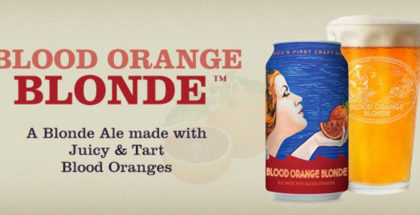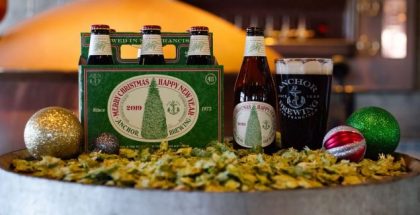Beer Showcase | Stiegl Lemon Zitrone Radler
“In fourteen hundred ninety-two, Columbus sailed the ocean blue,” but a few months before Columbus landed in the Caribbean, an Austrian brewery that came to be known as Stiegl arose in the town of Salzburg. Five and a quarter centuries later, the world has dramatically changed, but Stiegl is still there and still delivering beer in its hometown by horse and carriage. The one thing that is new is the Stiegl Zitrone Lemon Radler, its newest summer-friendly, highly sessionable U.S. import.
Stiegl Zitrone Lemon Radler starts with locally sourced, fresh spring water from Untersberg Mountain, located near the brewhouse and used for the purposes of brewing its signature Stiegl Goldbrau Lager. Finally, brewers add 100% natural lemon juice to the lager, resulting in a bubbly and cloudy beer, offering a zingy, citrusy aroma and tart, lemon flavor.

For those unfamiliar with radlers, let’s give a brief, truncated history of the style.
The genesis of the radler dates back to 18th-century England where a shandy-style beer emerged — a mix of beer with fruit juice (usually carbonated), ginger soda, or something similar. By the 20th century, the shandy-type beer received a boost in Bavaria (not far from Austria, if you are unfamiliar with your Germanic-regional geography), when bicyclists looked for something refreshing to drink. Today, Shandy and Radler are largely interchangeable (if not confusing), but basically one is English and one is German. All you really need to know is that a radler or shandy involves beer mixed with fruit or soda, which basically transforms the beer into an rudimentary form of a beer cocktail, or spritzer.
That’s why summertime is often “radler time.”
Summer, too, is a time for runners, hikers and bicyclists to venture outside and break a sweat. Indeed, the term “radler” is German in origin, meaning “cyclist.” At 175 calories and a mere 2% ABV, Zitrone is full of flavor, but offers little negative effects.
So, whether you are looking for a refreshing beer beverage on a warm summer night, a convenient libation to compliment your summer picnic, or seeking a flavorful reward for conquering a nearby bike trail; Stiegl Zitrone Lemon Radler is a great treat for your taste buds.








Submit a Comment